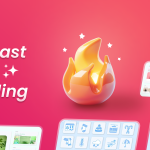What is a pitch deck presentation? New startups rise and fall day after day. In a highly competitive market, having a good idea is not a guarantee for success.
Finding support to help you kickstart your business is the first obstacle you encounter as a new entrepreneur. And even when you finally manage to set up a meeting, you will have only 3 minutes to grab someone’s attention. This reason is that investors are very busy people.
That’s why a good, concise presentation (a pitch deck) is the sharpest tool in your shed you can use. It minimizes the time needed to introduce your story to your audience without losing any critical points down the road.
This article will cover pitch decks’ essential key points and will provide you with several pro tips when creating a presentation of your own.
By the end of the page, you will find out:
• What is a pitch deck, and what is the idea behind it
• The key elements/slides of a pitch deck
• Pro tips when creating your very own pitch deck
• Examples of successful pitch decks
• Where to find free pitch deck templates
What is a pitch deck presentation?
A pitch deck is a short presentation that consists of 10 to 20 slides. It’s designed to provide your clients, investors, or other types of audiences a brief insight into your business model, your company’s mission, or your startup vision.
There are several pitch deck variations, and every single one has its unique purpose. Whether you’re trying to acquire that essential funding, present your ideas to your superiors/colleagues, or spread the knowledge among your students, a pitch deck is an excellent method of presentation.
Critical elements of a pitch deck presentation
1. Introduction
Let your audience know who you are, why you’re here, and why your message matters. Keep it short and sweet while setting the tone for your presentation during the introduction. If you’re showcasing your company, a promotional video can be a great way to kick things off. Just remember to keep it brief so it doesn’t take up too much of your presentation time.
2. Team
Introduce the brilliant minds behind your idea…your core team! Share a quick overview of each member’s role and expertise to give a clear picture of their contributions. Make it engaging by adding a creative touch, like an interactive slide or a photo map of your team, to grab attention.
The team slide is one of the most important parts of any pitch deck. It’s your moment to show investors that you have a passionate, skilled, and reliable team ready to bring your vision to life.
3. Problem
Start by identifying one or more problems your product aims to solve. Be clear and direct—make it easy for your audience to understand the issues you’re addressing.
Take Bumble as an example. This dating app has gained significant attention, especially after its owner became the youngest self-made woman billionaire. While there are many dating apps out there, Bumble stands out by solving a specific problem.
The creators of Bumble focused on addressing a common issue in other dating apps: women often receive unwanted and inappropriate messages. By tackling this concern, Bumble created a safer, more empowering space for women in the online dating world.














Leave a Reply
You must be logged in to post a comment.